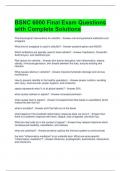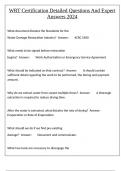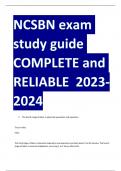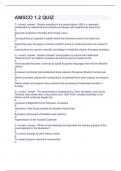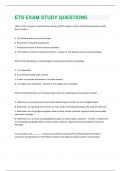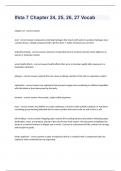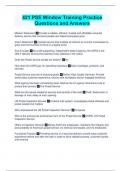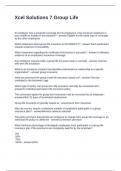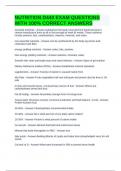Exam (elaborations)
BSNC 6000 Final Exam Questions with Complete Solutions
- Course
- Institution
BSNC 6000 Final Exam Questions with Complete Solutions Pharmacological interventions for cellulitis: - Answer-oral and parenteral antibiotics and analgesia What kind of analgesia is used in cellulitis? - Answer-acetaminophen and NSAID Which antibiotics are typically used to treat celluliti...
[Show more]
